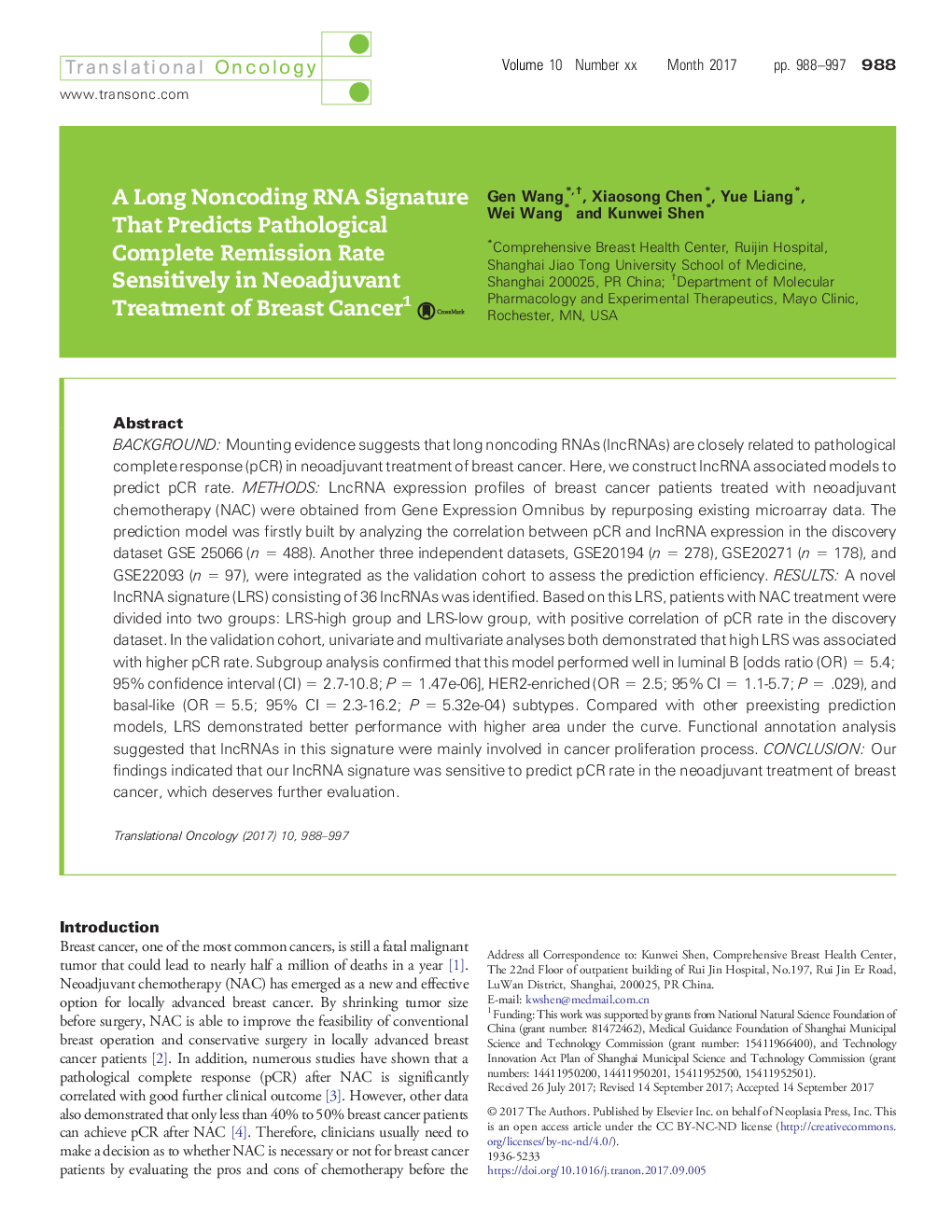| کد مقاله | کد نشریه | سال انتشار | مقاله انگلیسی | نسخه تمام متن |
|---|---|---|---|---|
| 8460084 | 1548915 | 2017 | 10 صفحه PDF | دانلود رایگان |
عنوان انگلیسی مقاله ISI
A Long Noncoding RNA Signature That Predicts Pathological Complete Remission Rate Sensitively in Neoadjuvant Treatment of Breast Cancer
دانلود مقاله + سفارش ترجمه
دانلود مقاله ISI انگلیسی
رایگان برای ایرانیان
موضوعات مرتبط
علوم زیستی و بیوفناوری
بیوشیمی، ژنتیک و زیست شناسی مولکولی
تحقیقات سرطان
پیش نمایش صفحه اول مقاله

چکیده انگلیسی
BACKGROUND: Mounting evidence suggests that long noncoding RNAs (lncRNAs) are closely related to pathological complete response (pCR) in neoadjuvant treatment of breast cancer. Here, we construct lncRNA associated models to predict pCR rate. METHODS: LncRNA expression profiles of breast cancer patients treated with neoadjuvant chemotherapy (NAC) were obtained from Gene Expression Omnibus by repurposing existing microarray data. The prediction model was firstly built by analyzing the correlation between pCR and lncRNA expression in the discovery dataset GSE 25066 (n = 488). Another three independent datasets, GSE20194 (n = 278), GSE20271 (n = 178), and GSE22093 (n = 97), were integrated as the validation cohort to assess the prediction efficiency. RESULTS: A novel lncRNA signature (LRS) consisting of 36 lncRNAs was identified. Based on this LRS, patients with NAC treatment were divided into two groups: LRS-high group and LRS-low group, with positive correlation of pCR rate in the discovery dataset. In the validation cohort, univariate and multivariate analyses both demonstrated that high LRS was associated with higher pCR rate. Subgroup analysis confirmed that this model performed well in luminal B [odds ratio (OR) = 5.4; 95% confidence interval (CI) = 2.7-10.8; P = 1.47e-06], HER2-enriched (OR = 2.5; 95% CI = 1.1-5.7; P = .029), and basal-like (OR = 5.5; 95% CI = 2.3-16.2; P = 5.32e-04) subtypes. Compared with other preexisting prediction models, LRS demonstrated better performance with higher area under the curve. Functional annotation analysis suggested that lncRNAs in this signature were mainly involved in cancer proliferation process. CONCLUSION: Our findings indicated that our lncRNA signature was sensitive to predict pCR rate in the neoadjuvant treatment of breast cancer, which deserves further evaluation.
ناشر
Database: Elsevier - ScienceDirect (ساینس دایرکت)
Journal: Translational Oncology - Volume 10, Issue 6, December 2017, Pages 988-997
Journal: Translational Oncology - Volume 10, Issue 6, December 2017, Pages 988-997
نویسندگان
Gen Wang, Xiaosong Chen, Yue Liang, Wei Wang, Kunwei Shen,